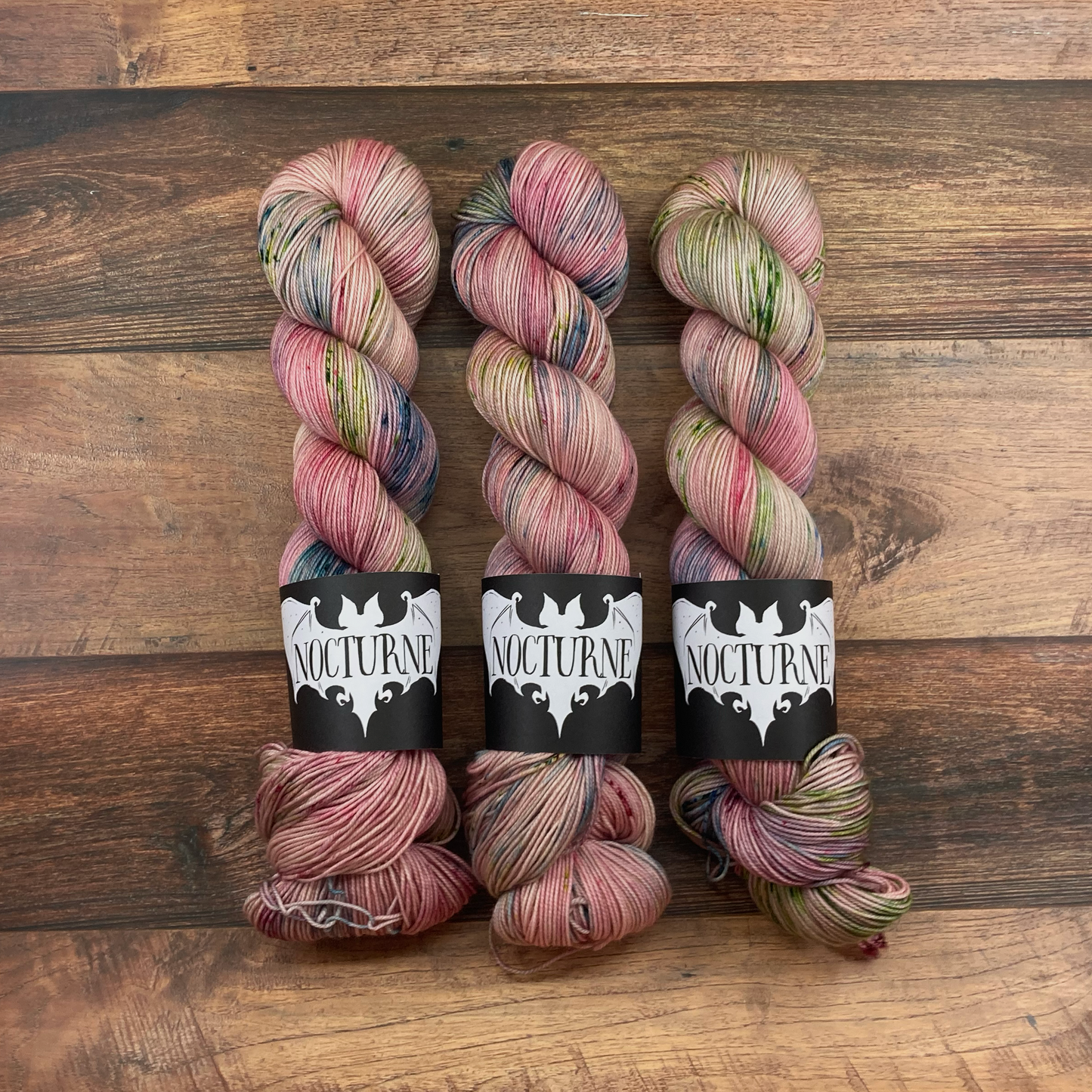Nocturne
Foxglove - Mokosh & Mokosh DK
Foxglove - Mokosh & Mokosh DK
In stock
- Need more? Click here for Custom Orders!
Couldn't load pickup availability
The colourway Foxglove has a cream-pink base, with pink, mauve and green speckles and streaks.
Digitalis is a genus of about 20 species of herbaceous perennial plants, shrubs, and biennials, commonly called foxgloves.
Digitalis purpurea, the foxglove or common foxglove, is the best-known species of the flowering plant, which is entirely toxic (including the roots and seeds). It is often grown as an ornamental plant due to its vivid flowers, which range in colour from various purple tints through pink and purely white.
Depending on the species, the digitalis plant may contain several deadly toxins. Thus, the foxglove plants have earned several, more sinister, names: dead man's bells and witch's gloves. The toxins can be absorbed via the skin or ingestion.
The name is recorded in Old English as 'foxes glofe/glofa' or 'fox's glove'. Over time, folk myths obscured the literal origins of the name, insinuating that foxes wore the flowers on their paws to silence their movements as they stealthily hunted their prey. It is conceivable that the connection to foxes emerged from their denning behaviour; the woody hillsides where the foxes made their burrows were often covered with the toxic flowers.
Mokosh Fingering
Fiber contents: 100% Superwash Merino (19,5 Microns)
Weight per skein: 100 g / 3,5 oz
Running length Fingering: 400 m / 437 yds
Yarn Weights Available: Fingering & DK
✓ Oeko-Tex 100 Certified Yarn Base
Mokosh DK
Fiber contents: 100% Superwash Merino (19,5 Microns)
Weight per skein: 100 g / 3,5 oz
Running length DK: 225 m / 246 yds
Yarn Weights Available: Fingering & DK
✓ Oeko-Tex 100 Certified Yarn Base
Mokosh is a super soft yarn with a natural shine. Creates a beautiful fabric and is fantastic for the lovers of a gentle tactile experience without compromising the fibre strength and washability. Mokosh makes cozy, comfortable sweaters, shawls and accessories.
Mokosh is named after an ancient Slavic goddess Mokosh, Mokush or Mokosha. The veneration of Mokosha as the protector of sheep and spinning wheels was maintained in northern Russian and Ukrainian folklore until the mid-19th century. She had a large head and long arms, and would go around cottages and spinning wheels at night if the tow was left freely accessible. Although traces of her cult were recorded in the middle of the 19th century in northern Russia, the figure and position of this goddess in the Slavic pantheon have not been satisfactorily explained to this day. She however appears prominently as the protector of women's work, especially spinning and sheep shearing.
Share

Collapsible content
Essential Information for buying our Hand-Dyed Yarns
When purchasing hand-dyed yarn, we recommend buying enough for your entire project.
Our yarn is handmade in small batches. While we follow precise recipes for repeatable colorways and carefully measure our materials, slight variations between skeins are inevitable. No two skeins will ever be identical, as is the nature of handcrafted products.
We take new photos for each dye lot, so images on our website may differ from skeins you’ve purchased in previous batches.
For a more uniform appearance in knitting, crochet, or weaving, alternate skeins every few rows.
We ensure all dyes are fully exhausted before rinsing our yarn. However, mild color bleeding can still occur, especially with bright, dark, or speckled skeins. To prevent unexpected color transfer, rinse your skein in cold water with wool wash and let it dry before starting your project.
For detailed care instructions, please follow this link.
This listing is for one (1) skein of yarn unless stated otherwise. Photos of multiple skeins are for comparison purposes, showcasing differences between yarn bases and/or skeins.
Please note that colorways may appear slightly different due to display settings on your device. Especially keep this in mind if you are using apple devices, which are known to alter colours. While we optimize our photography for color accuracy, viewing images on a monitor provides the most reliable representation.
